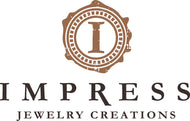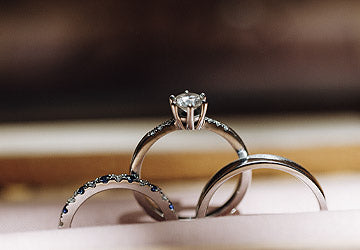You might have heard of conflict free diamonds, but do you know what the conflict is all about? Diamonds are beautiful and rare, making them valuable and highly sought after by consumers and enterprising businesses. But, what happens when diamonds become the means of a violent and desperate end?
In this article, learn everything you need to know about the difference between conflict diamonds and conflict free diamonds, or ethically sourced diamonds. Find out what the Kimberley Process is, and how it works to successfully curb the global trade of conflict diamonds. And, discover how choosing a diamond with a Kimberley Process Certification is the best way to support the ethical trading of diamonds, across the globe and in your local community.
WHAT IS A CONFLICT FREE DIAMOND?
The vast majority of diamonds that circulate in the marketplace are – and always have been – conflict free diamonds. Conflict diamonds, or ‘blood diamonds’ – even at the height of the illegal conflict diamond trade – are a loud minority. And, today, the illegal conflict diamond trade has been, by and large, eradicated.
Conflict free diamonds are those which have not been sourced from unethical means and carry a Kimberley Process Certification. But, that does not answer the initial question, of what the conflict is, in the first place. Aren’t diamonds just like any other mineral?
No – diamonds are very special, for several reasons. Over 60% of the Earth's diamonds are in Africa. Specifically, the countries of South Africa, Botswana, Democratic Republic of Congo, and Sierra Leone are especially rich in diamond deposits.
WHAT’S THE “CONFLICT” WITH CONFLICT DIAMONDS?
The conflict with diamonds originates with the human quest for power, money, and democracy as it is playing out in African nations. Many underdeveloped African nations are some of the most resource-rich countries in the world. A great tragedy of these countries is that western influence has long been the destabilizing force that leads to human rights abuse, tribal terrorism, and rampant corruption.
These are the factors in play in the 1990s, during the Sierra Leone civil war – when most of the world woke up to the reality of where diamonds come from. The local government combatants funded their fight by taking control of the country's gold mines, while the rebel army seized control of the diamond mines. A civil war was being funded by diamonds, mined with slave labor, and paid for by rich western consumers in jewelry stores.
Conflict diamonds are those mined through the use of inhumane labor practices and serve the purpose to fund warfare. Also called blood diamonds, a conflict diamond is that which is illegally traded into the world market, often originating in Western and Central African Nations. If the country in which the diamond is sourced is currently controlled by a force or faction in opposition to the government recognized by the United Nations, it is a conflict diamond.
It is virtually impossible to identify the source of a diamond's origin after it has been cut and polished, making it all too easy for conflict diamonds to make their way onto the open market. During the civil war, it is estimated that around $300 million worth of diamonds came out of Sierra Leone. This money came out of consumers' pockets and made its way into the pockets of warlords, zealots, and western profiteers. These profits come at the expense of local communities and families forced into slave labor.
CONFLICT FREE DIAMONDS VS CONFLICT DIAMONDS
After the connection became clear, between the world markets diamond supply and local warfare, the United Nations agreed on the Kimberley Process Certification Scheme, which serves to provide a guarantee that the diamonds come from ethical means. Countries agreeing to the Kimberley Process Certification scheme can lawfully trade diamonds into the open market if they abide by accepted humane and ethical business standards.
The Kimberley Process has made progress on limiting the supply of illegally traded diamonds to the market. Participating countries are responsible to only import diamonds that have an official Kimberly Process Certificate. Accountability to these standards is self-regulated by the industry actors and maintained by it's participating members.
IS THERE SUCH A THING AS NON-AFRICAN DIAMONDS?
As stated before, around 60% of diamonds come from African countries, but Canada is also home to some of the world's most fruitful diamond mines. You can be sure that Canadian diamonds are sourced ethically, but they may cost a little more.
You probably didn’t know that you can find diamonds right here, in the United States. Arkansas is home to a diamond mine unlike any other on earth because it is in a state park. Crater of Diamonds State Park is the world's 8th largest diamond-bearing volcanic crater. For a $10 daily fee, you can dig and pan for your very own raw, uncut earth diamond over the craters 37.5-acres.
The Crater of Diamonds State Park averages a diamond-find per day and holds the record for seven of the top 10 largest diamonds found in North America. But, if you’d rather leave the sourcing to someone who doesn't have to break their back to find one, leave it to the scientists.
Arguably, today, the most ethical source for diamonds is the lab. Lab-created diamonds are chemically and optically identical to earth-mined diamonds, but they are forged in controlled laboratory conditions. But, there is no substitute for the beauty nature creates in the formation of an Earth-mined diamond.
Your diamond has a reputable Kimberley Process Certification tracking number which verifies it’s certification at each stage of procurement. Eerie ethically sourced diamond sold helps the Kimberley Process maintain the integrity of the world's diamond markets. Talk to a diamond expert today to see the wide selection of conflict free diamonds with a Kimberley Process Certification.





